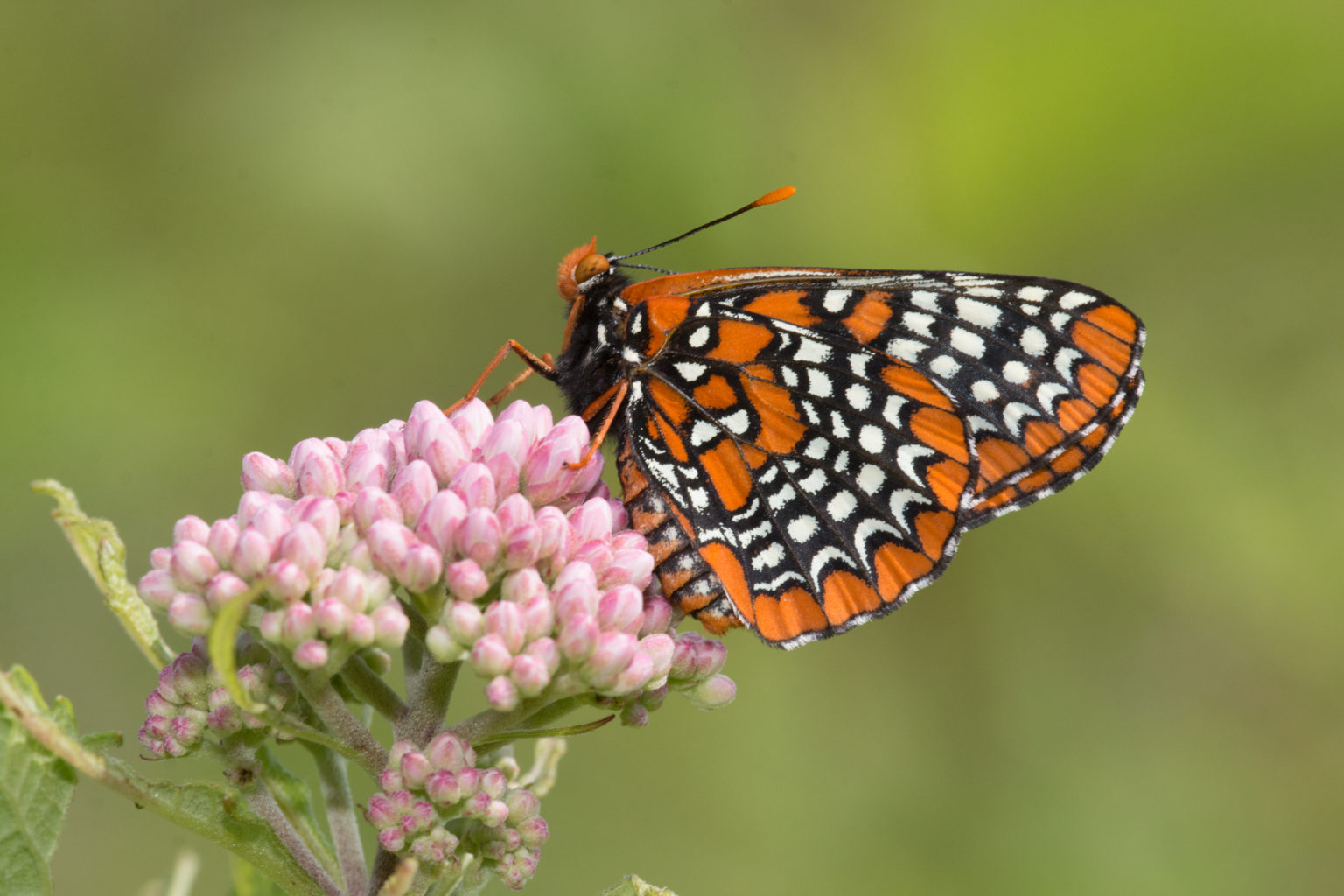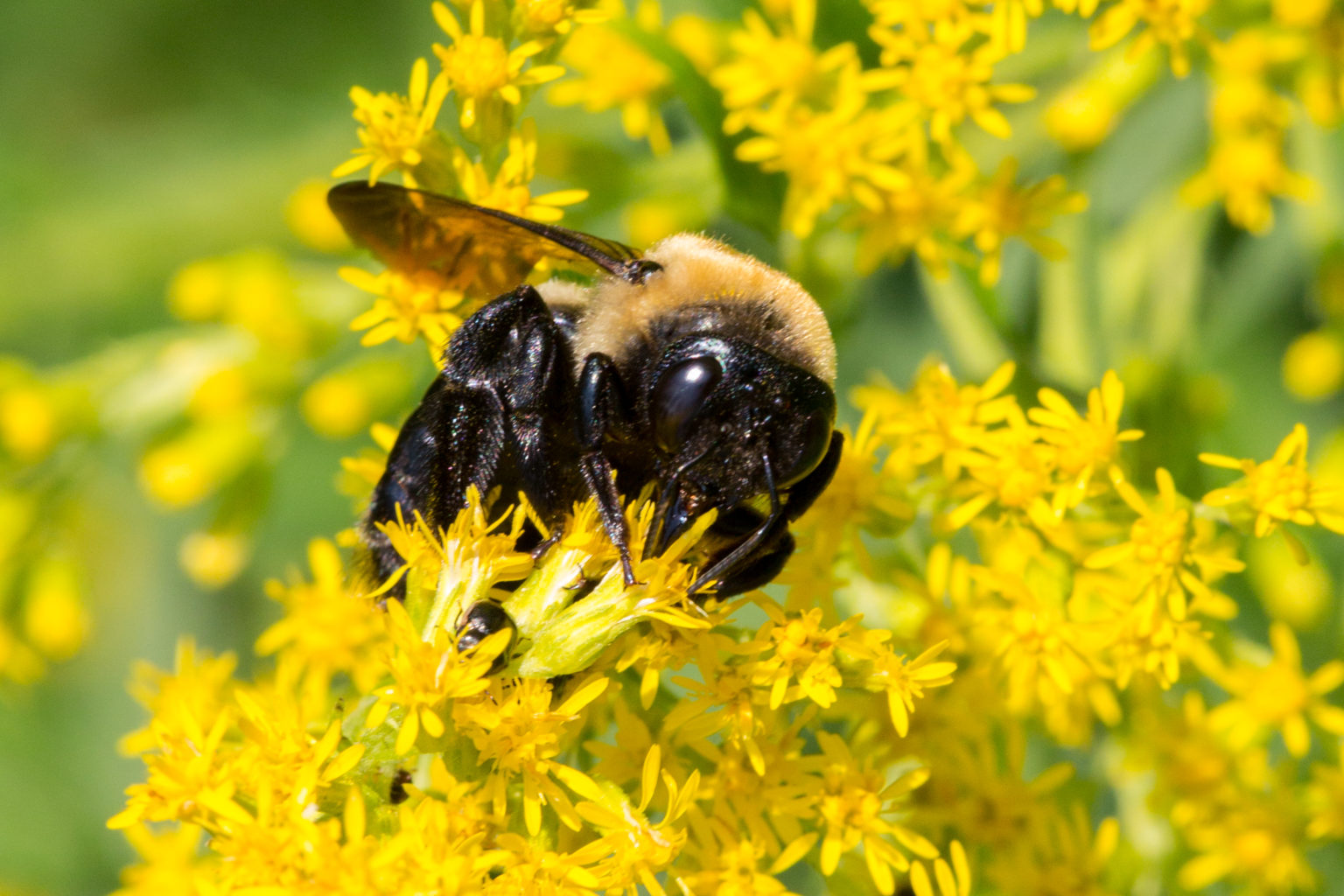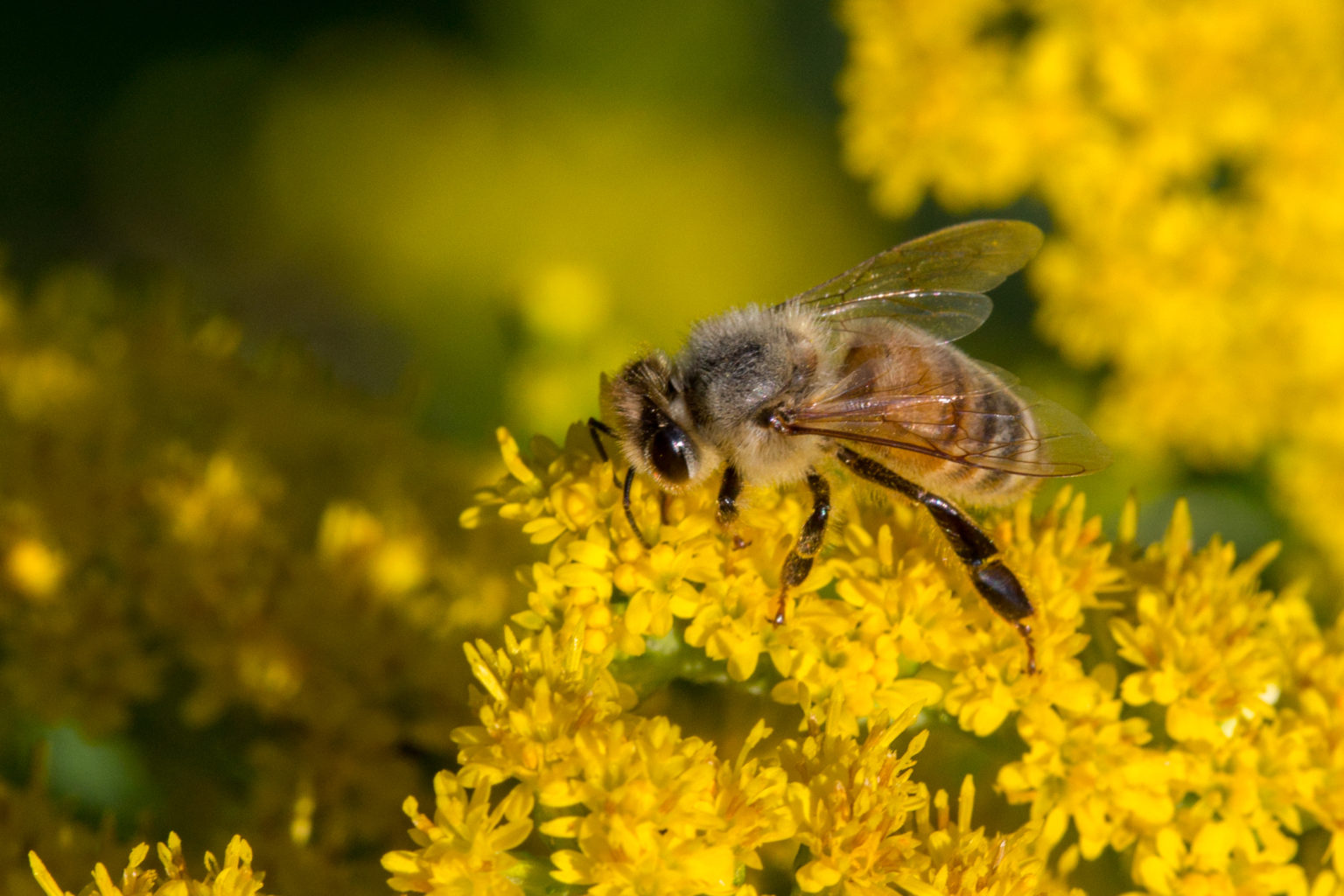Conserving Pollination

By Sean Beckett, NBNC Staff Naturalist
(Banner image: Baltimore Checkerspot; All imagery by Josh Lincoln)
An act of clever deception is one of the most important things in the world. And that act may be in peril.
Just like animals, plants reproduce by mating. More precisely, the pollen from one flower must land precisely on the pollen receptor of another. Since plants can’t move around to meet up, most produce flowers to recruit the unwitting assistance of those who can. These captivating, beautiful ornaments are enchanting to us, but irresistible to a bee. A flower is much more than pretty — it is an audacious advertisement for tasty nectar. Buried deep in the flower beneath a calamity of pollen-producing and pollen-receiving filaments, this sugary syrup’s only job is to attract animals. When that nectar-seeking bee climbs in for a sip, it becomes hopelessly covered in pollen, which gradually shakes off into every flower visited thereafter. Some plants forego nectar entirely and instead cast their pollen to the wind. But the vast majority of the world’s flowering plants employ the ruse.
Pollination is so pervasive we generally take it for granted — when was the last time you thanked a honeybee? That one-pound jar of honey by your teapot required more than 20,000 worker bees to journey a collective 75,000 miles between some eight million flowers. Extrapolate this service to the scale of a field or a wilderness and you can begin to fathom the mind-boggling abundance and industriousness of our pollinators. And the humble (non-native) honeybee has a much more important job than sweetening our tea. Honeybees pollinate $20 billion of U.S. crops annually, and over $250 billion worldwide. From apples to artichokes, we rely on pollinators for 35% of our plant-based food supply.
Large farms rely on commercial beekeepers for pollination services, but most of Vermont’s agriculture is pollinated by wild insects. And although honeybees often get all the credit, they’re just one species among thousands that pollinate our wild and cultivated plants. Of Vermont’s 2,000 species of flowering plants, over 80% are insect-pollinated by beetles, ants, wasps, flies, midges, and even mosquitoes! Even within bees, honeybees are one among hundreds of various mason bees, sweat bees, plasterer bees, and bumblebees that also pollinate our state.

The Pollinator Vanishing Act
The pollination ruse only works when there’s something to trick, and new studies predict an eerie prognosis for pollinators worldwide. A 35-year checkup on rainforest insect diversity in Puerto Rico found a staggering 98% loss of insect diversity. In Great Britain, grassland butterfly populations have been halved, disappearing completely from 13% of their historic study plots. German nature preserves have experienced a 75% drop in flying insects in the last 27 years.
These trends are now turning up at home. The Vermont Center for Ecostudies and the University of Vermont’s Gund Institute announced that half of Vermont’s 17 bumblebee species have either vanished or declined significantly over the last century. The Rusty-patched Bumblebee, a regular at flower gardens into the 1990s, has gone extinct in Vermont, right under our noses.
Statements from some scientists, who normally eschew dramatic declarations, have inspired alarming headlines. The Guardian published whopping phrases like “Ecological Armageddon,” “the destruction of our life support systems,” and “plummeting insects threaten the collapse of nature.” And readers opened the New York Times to the headline “The insect apocalypse is here.” A phrase coined in the 1980s captures the diminishing abundance — insect and otherwise — of our anthropocene: Defaunation.

Take Hope and Action
Before you stock your survival bunker, note that the headlines are inspired by limited research. Although these studies are accurate and provocative, insects are intractably diverse. Of the planet’s estimated five million insect species, 80% are still undescribed, meaning we’ve only studied a small and local subset. Many ecologists suggest treating the news as a clarion call for a major swell in pollinator research and conservation, in favor of alarmism and hopelessness. Critically, this is a problem that can truly be mitigated at hyperlocal scales. Here’s what you can do:
- Habitat Management: Cut back on mowing yards and fields. Encourage your neighbors to do the same. Lawns are pollinator deserts compared to occasionally brush-hogged fields. Maintain hedgerows between fields to provide habitat and connectivity. Keep some open ground and dead snags in the woods for ground- and cavity-nesting pollinators. Diversify the native plants in your gardens with a range of colors, blooming seasons, and native flower types. Encourage diversity in your forests by maintaining vertical structure: tall trees, small trees, shrubs, and herbs. Plant diversity begets insect diversity!
- Chemicals: Eliminate broad-spectrum herbicides from your gardens. Neonicitinoids are particularly harmful: they contaminate the soil for years and render even the nectar and pollen toxic for months after application. Glyphosate (aka Roundup) is under scrutiny for its deadly effects on critical gut bacteria in bees.
- Knowledge: Get to know your pollinators, and submit your backyard observations. Thanks to iNaturalist.org, anyone can contribute to our understanding of insect diversity with a smartphone photo. Vermonters discover new state species every year by sharing photos of insects they encounter.
- Meet and celebrate pollinators at BugFest on June 30: Learn about pollinator gardening, go on a butterfly walk, explore The Caterpillar Lab’s amazing exhibits, and get familiar with citizen science platforms like iNaturalist and eButterfly. Learn More!
They say to tell those you love how you feel about them. Next time you stop and smell the flowers, take a moment to thank the bees and bugs in your garden. Their survival, it turns out, may depend on us.


